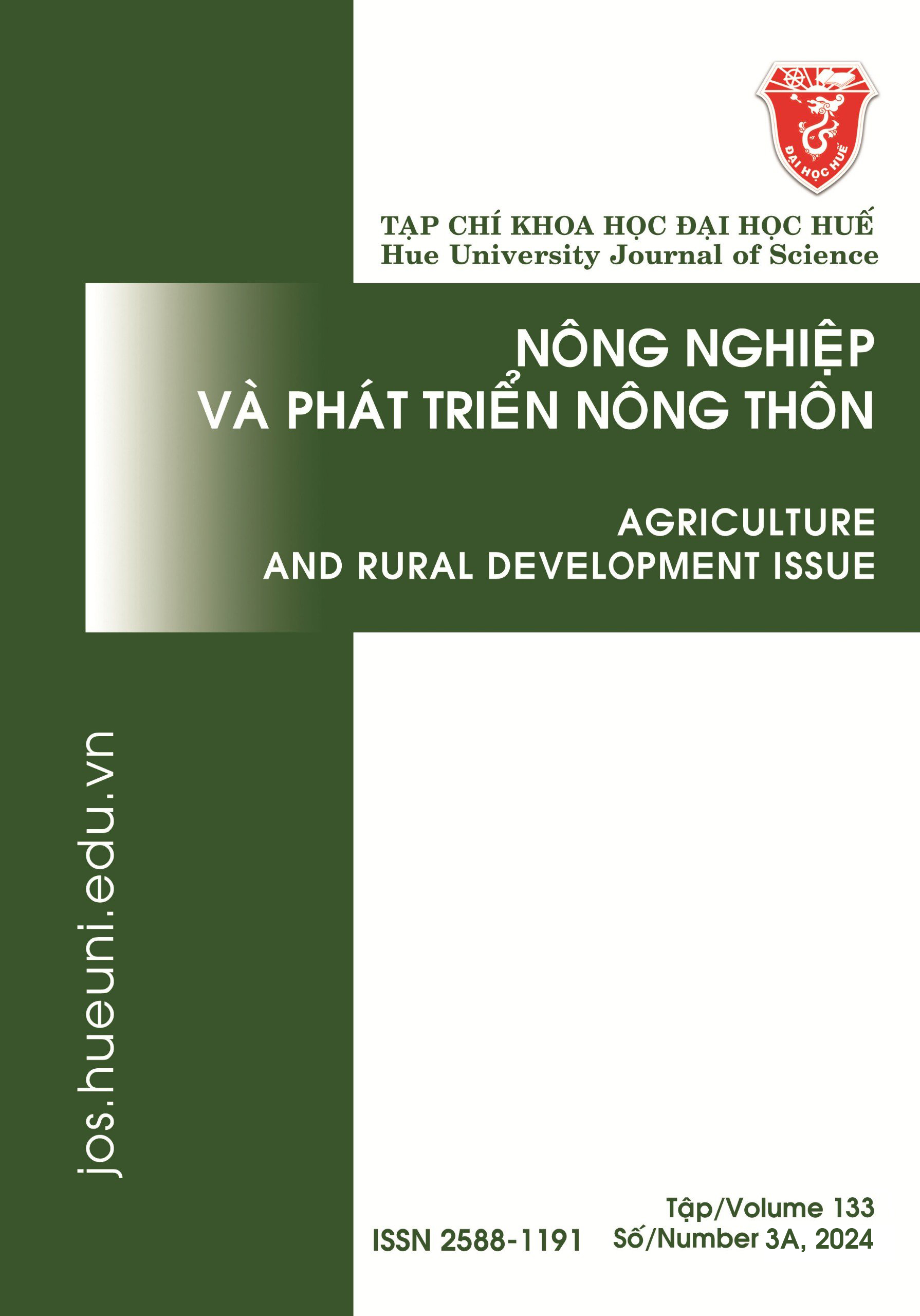Tóm tắt
Cây dừa là cây trồng quan trọng của tỉnh Bến Tre có nhiều giá trị sử dụng. Nghiên cứu này nhằm đánh giá thực trạng canh tác dừa tại tỉnh Bến Tre dựa trên số liệu thứ cấp từ Cục Thống kê tỉnh Bến Tre và số liệu sơ cấp thông qua phỏng vấn 150 hộ trồng dừa tại 5 huyện gồm Châu Thành, Giồng Trôm, Ba Tri, Thạnh Phú và Bình Đại. Kết quả cho thấy, diện tích trồng và thu hoạch dừa tại tỉnh Bến Tre có xu hướng tăng mạnh trong 10 năm (2012–2022), sản lượng tăng gấp 1,6 lần và đạt 686.279 tấn vào năm 2022. Hình thức canh tác dừa chủ yếu chuyên canh, phần lớn các hộ sử dụng giống dừa cao, mật độ trồng dao động 160–240 cây/ha, cây dừa bắt đầu ra hoa sau 3–6 năm trồng, số lần bón phân trong thời kỳ kinh doanh là 4–6 lần/năm, quản lý sâu bệnh hại dừa chủ yếu bằng thuốc bảo vệ thực vật với 3–6 lần phun/năm. Năng suất dừa phụ thuộc vào giống và kỹ thuật canh tác, trung bình 80–100 quả/cây/năm đối với dừa lùn và 40–80 quả/cây/năm đối với dừa cao. Chi phí đầu tư cho vườn dừa 10–30 triệu đồng/ha/năm, thu nhập bình quân 30–100 triệu đồng/ha/năm và đem lại lợi nhuận 30–60 triệu đồng/ha/năm.
Tài liệu tham khảo
- Food and Agriculture Organization of the United Nations (2023), truy cập ngày 20 tháng 08 năm 2023, <http://www.fao.org/faostat/en/#data/QC>.
- Cục Thống kê tỉnh Bến Tre (2023), Niên giám thống kê năm 2022, Nxb. tổng hợp Thành phố Hồ Chí Minh.
- Cheng-Xu, S., Hong xing, C., Hong bo, S., Xin tao, L., & Yong, X. (2011), Growth and physiological response to water and nutrient stress in oil palm, African Journal of Biotechnology, 10(51), 10465–10471.
- Trần Văn Hâu, Triệu Quốc Dương (2011), Điều tra một số biện pháp canh tác, hiện tượng dừa không mang trái và áp dụng biện pháp canh tác tổng hợp trên năng suất dừa Ta xanh (Cocos nucifera L.) tại tỉnh Bến Tre, Tạp chí Khoa học Trường Đại học Cần Thơ, 17b, 272–281.
- Trần Tiến Khai, Lê Văn Gia Nhỏ, Nguyễn Văn An (2012), Đánh giá hiệu quả sản xuất dừa ở nông hộ tỉnh Bến Tre, Tạp chí Phát triển Nông nghiệp và Nông thôn Việt Nam, 262, 21.
- Stephanie E. (2003), Slovin’s Formula for Sampling Technique. Houghton-Mifflin, New York, USA.
- Narayana, G. V., John, C. M. (1949), Varieties and forms of coconut, Madras Agric J, 36, 349–366.
- Phạm Thị Lan, Võ Văn Long, Nguyễn Thị Bích Hồng, Lưu Quốc Thắng và Phạm Phú Thịnh (2010), Nghiên cứu hoàn thiện các dữ liệu khoa học của bốn giống dừa bản địa làm cơ sở xin công nhận giống, Báo cáo tổng kết đề tài cấp Bộ, Viện nghiên cứu dầu và Cây có dầu.
- Baloch, P. A., Moizuddin, M., Imam, M., Abro, B. A., Lund, J. A., and Solangi, A. H. (2004), Effect of NPK Fertilizers and Farmyard Manure on Nut Production of Coconut (Cocos nucifera L.), Asian Journal of Plant Sciences, 3(1), 91–93.
- Nguyễn Bảo Vệ, Trần Văn Hâu và Lê Thanh Phong (2005), Giáo trình Cây Đa Niên, Phần II cây công nghiệp, Tủ sách Đại học Cần Thơ, 3–47.
- Trần Văn Hâu (2008), Giáo trình xử lý ra hoa cây ăn trái, Nxb. Đại học Quốc gia TP. Hồ Chí Minh, 304.
- Đặng Xuân Nghiêm (1991), Cây dừa, Nxb. Nông nghiệp, 152.
- Trần Văn Hâu và Nguyễn Chí Linh (2011), Khảo sát đặc tính ra hoa của một số giống dừa (Cocos nucifera L.) cao được trồng tại huyện Giồng Trôm, tỉnh Bến Tre, Tạp chí Khoa học Trường Đại học Cần Thơ, 17a, 210–218.
